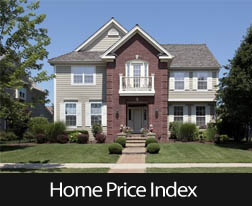What’s Ahead For Mortgage Rates This Week – November 30, 2015

Although last week’s economic calendar was cut short by the Thanksgiving holiday, several housing-related reports were released. The FHFA reported on third quarter results for its Housing Market Index and the Commerce Department reported on new home sales for October. Freddie Mac released its weekly report on mortgage rates and data on new weekly jobless claims was also released.
FHFA, Commerce Department report Gains for Home Prices, New Home Sales
Home prices for mortgages associated with mortgages owned or backed by Fannie Mae and Freddie Mac increased 1.30 percent during the quarter ended September 30. This was the 17th consecutive seasonally adjusted quarterly increases for home prices based on sale-only transactions. FHFA home prices rose by 0.80 percent from the second to third quarter of 2015 and rose by 5.70 percent from third quarter 2014 to third quarter 2015 readings.
New home sales rose by a seasonally adjusted annual rate of 10.70 percent to 495,000 sales based on a downwardly revised September reading of 447,000 new home sales.
New home sales results were mixed according to the Commerce Department. Sales of newly built homes rose by an astounding 135.30 percent in the Northeast and increased by 8.90 percent in the South and by 5.30 percent in the Midwest. Sales of new homes declined in the West with a reading of -0.90 percent.
Home shoppers received good news as the median price of a new home fell 6 percent to $281,500. Inventory of new homes increased to its highest level since 2010. Higher inventory could ease demand and rapidly rising home prices associated with low supplies of new homes for sale.
Mortgage Rates Mixed, Jobless Claims Lower
Average mortgage rates varied last week according to Freddie Mac. 30-year fixed mortgage rates were two basis points lower at 3.95 percent; the average rate for a 15-year fixed rate mortgage was unchanged at 3.18 percent, and the average rate for a 5/1 adjustable rate mortgage was three basis points higher at 3.01 percent. Average discount points where 0.70 for a 30 year fixed rate mortgage and averaged 0.50 percent for 15-year fixed rate mortgages and 5/1 adjustable rate mortgages.
New jobless claims fell from the prior week’s reading of 272,000 new claims to 260,000 new claims. Analysts expected a reading of 270,000 new claims. The four-week rolling average of new jobless claims was unchanged at 271,000 after an adjustment to the prior week’s average of 270,750 new claims to a weekly average of 271,000 claims filed over the previous four weeks.
What’s Ahead
This week’s scheduled economic news includes reports on construction spending along with Labor Department releases on the national unemployment rate and Nonfarm Payrolls. Freddie Mac’s report on mortgage rates and weekly data on new jobless claims will be released as usual.


